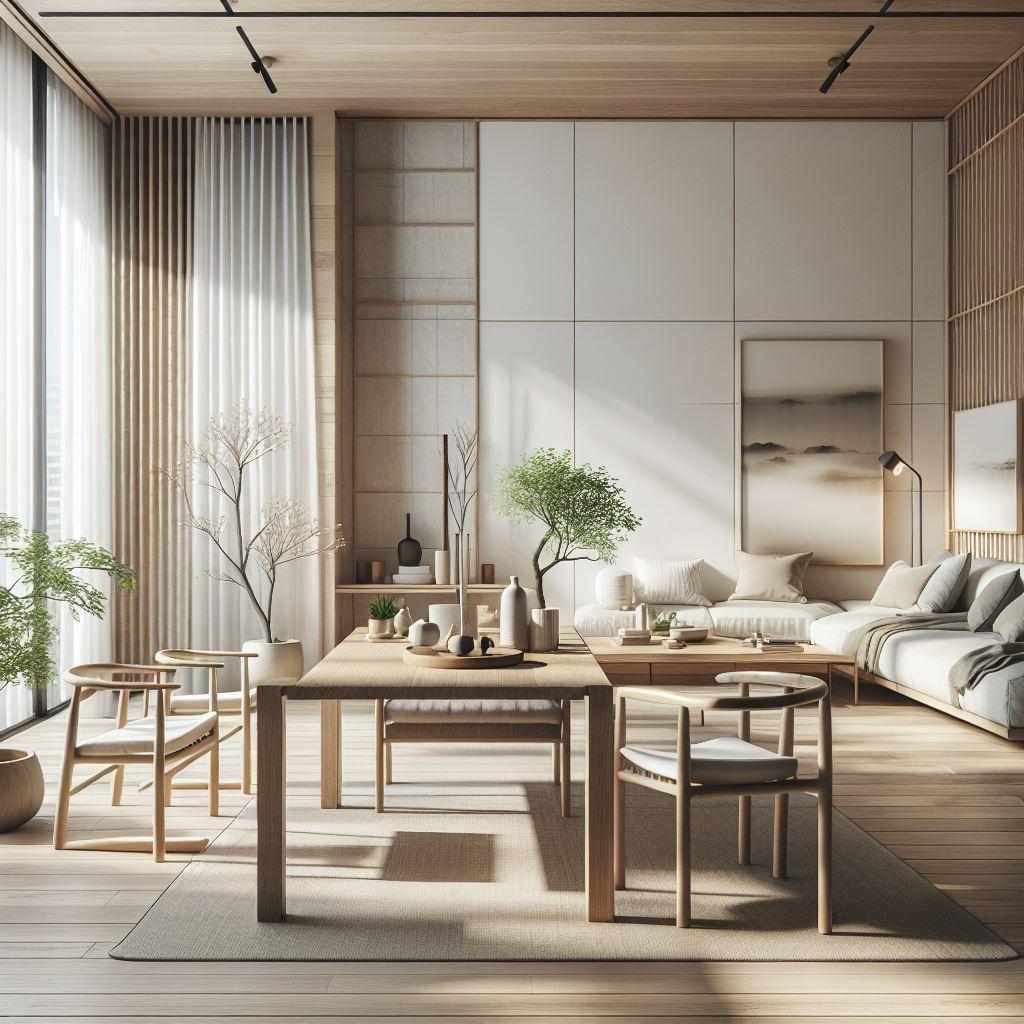

- Design & Home
- By Shruti Wagedre
Japandi Design: The Minimalist Fusion Trend Taking Over Homes
In recent years, interior design has witnessed the rise of Japandi, a captivating fusion of Japanese and Scandinavian aesthetics that emphasizes minimalism, functionality, and a deep connection to nature. As homeowners increasingly seek tranquility and simplicity in their living spaces, Japandi design offers a refreshing approach that balances beauty with purpose. This article explores the essence of Japandi design, its core principles, and practical tips for incorporating this trend into your home.
The Origins of Japandi Design
Historical Context
The roots of Japandi design can be traced back to the cultural exchanges between Japan and Scandinavia. In the mid-19th century, Japan reopened its borders after over 200 years of isolation. This period attracted artists and designers from Scandinavia who were enchanted by Japan’s artistry and zen aesthetics. Upon returning home, they brought back inspiration that would eventually blend with their own design philosophies.
This fusion resulted in what we now recognize as Japandi—a style that harmonizes the serene minimalism inherent in Japanese culture with the warm, functional aspects characteristic of Scandinavian design.
Core Philosophies
At the heart of Japandi are two foundational philosophies:
- Wabi-Sabi: This Japanese concept celebrates beauty in imperfection. It encourages appreciation for the transient nature of life and finds charm in objects that show wear or irregularity.
- Hygge: Originating from Denmark, Hygge embodies coziness, comfort, and contentment. It emphasizes creating warm atmospheres through thoughtful decor choices that invite relaxation.
Together, these philosophies guide the principles behind Japandi design, fostering spaces that are both beautiful and deeply meaningful.
Key Elements of Japandi Design
Color Palette
The color palette in Japandi interiors is dominated by soft, muted tones inspired by nature. Think gentle beiges, soft grays, pale greens, and warm whites. These colors create a serene atmosphere reminiscent of natural landscapes while promoting tranquility within the space.
Additionally, avoiding overly bright or harsh colors helps maintain a calm environment conducive to relaxation.
Materials
Natural materials play a crucial role in defining Japandi aesthetics. Wood—particularly lighter varieties like oak or bamboo—serves as a fundamental element in furniture and decor. Stone accents add texture while textiles such as linen or wool introduce warmth to the space.
The emphasis on sustainability is also evident; choosing eco-friendly materials aligns with both Japanese respect for nature and Scandinavian practicality.
Furniture and Layout
Japandi furniture embodies functionality combined with elegance. Pieces often feature clean lines devoid of excessive ornamentation. Low-slung seating arrangements nod to traditional Japanese floor seating while promoting an inviting atmosphere.
Open floor plans are common in Japandi homes as they facilitate movement between spaces while maximizing natural light—an essential component for creating airy environments.
Decor and Accessories
In keeping with minimalist principles, decor in a Japandi space should prioritize quality over quantity. Each item should serve a purpose—whether functional or aesthetic—and contribute to the overall harmony of the room.
Incorporating plants not only enhances visual appeal but also aligns with biophilic design principles by fostering a connection to nature. Houseplants like snake plants or peace lilies thrive indoors while improving air quality.
Practical Tips for Creating a Japandi Space
Declutter Your Home
A key tenet of Japandi design is minimalism; thus, decluttering your home is essential for creating peaceful environments. Start by assessing each room—remove items that no longer serve you or contribute positively to your space.
Consider adopting a “one-in-one-out” rule when acquiring new items to maintain balance within your home.
Choose Multi-functional Furniture
Opting for multi-functional furniture allows you to maximize space without compromising on style. Look for pieces such as ottomans with storage capabilities or coffee tables that can double as workspaces.
This approach not only enhances functionality but also aligns perfectly with the minimalist ethos central to Japandi design.
Embrace Natural Light
Natural light plays an integral role in enhancing mood while making spaces feel larger. Maximize daylight exposure by using sheer curtains instead of heavy drapes or strategically placing mirrors to reflect light throughout your home.
Consider incorporating large windows or sliding doors if renovating—this creates seamless transitions between indoor and outdoor living areas.
Incorporate Personal Touches
While maintaining minimalism is vital in Japandi design, adding personal touches can infuse warmth into your space. Choose decor items that resonate with you—perhaps handmade pottery from local artisans or artwork reflecting your passions—while ensuring they fit harmoniously within the overall aesthetic.
Balancing personal sentiment with simplicity will create an inviting atmosphere without overwhelming visual clutter.
The Benefits of Japandi Design
Emotional Well-being
Living in minimalist spaces has been shown to reduce stress levels significantly. By minimizing distractions through decluttering practices inherent in Japandi philosophy, individuals often experience enhanced focus alongside improved emotional well-being—a much-needed respite from modern life’s chaos.
Sustainability
Japandi’s emphasis on natural materials promotes eco-friendly practices by encouraging mindful consumption habits among homeowners. Prioritizing sustainably sourced furnishings not only benefits personal health but also contributes positively towards environmental preservation efforts globally.
Timelessness
The enduring appeal of Japandi aesthetics lies within its ability to adapt over time without losing relevance—making it an excellent investment choice for homeowners looking for longevity rather than fleeting trends within their interiors!
Conclusion
Japandi design represents more than just an aesthetic; it is a lifestyle choice prioritizing simplicity alongside functionality while fostering connections between people & nature alike! By embracing this trend within our homes today—we can create tranquil sanctuaries where beauty flourishes alongside purposefulness! So why not embark on this journey towards serenity? Transform your living space into one infused with harmony & grace through inspiring elements found within timeless traditions! By understanding how our breath influences our body and mind, we can take charge of our well-being in ways that are both accessible and effective. So take a moment today—breathe deeply—and embrace the transformative power of breathwork!

